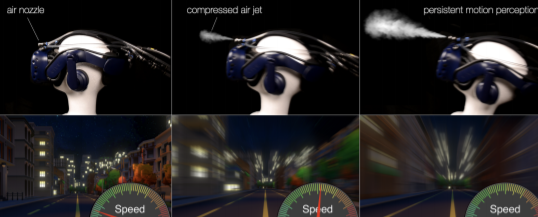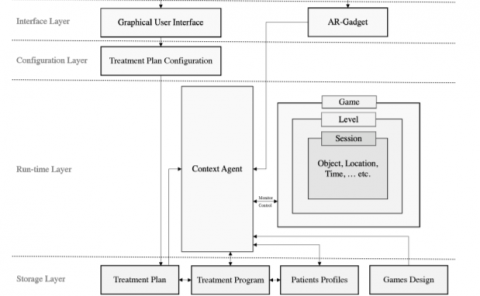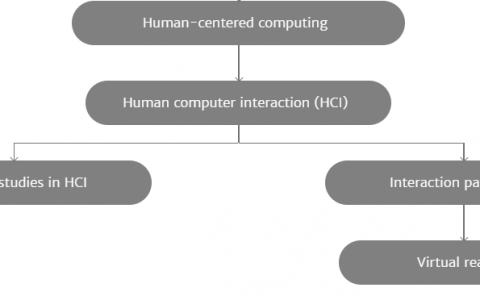HeadBlaster: a wearable approach to simulating motion perception using head-mounted air propulsion jets
PubDate: July 2020
Teams: National Taiwan University
Writers: Shi-Hong Liu;Pai-Chien Yen;Yi-Hsuan Mao;Yu-Hsin Lin;Erick Chandra;Mike Y. Chen

Abstract
We present HeadBlaster, a novel wearable technology that creates motion perception by applying ungrounded force to the head to stimulate the vestibular and proprioception sensory systems. Compared to motion platforms that tilt the body, HeadBlaster more closely approximates how lateral inertial and centrifugal forces are felt during real motion to provide more persistent motion perception. In addition, because HeadBlaster only actuates the head rather than the entire body, it eliminates the mechanical motion platforms that users must be constrained to, which improves user mobility and enables room-scale VR experiences. We designed a wearable HeadBlaster system with 6 air nozzles integrated into a VR headset, using compressed air jets to provide persistent, lateral propulsion forces. By controlling multiple air jets, it is able to create the perception of lateral acceleration in 360 degrees. We conducted a series of perception and human-factor studies to quantify the head movement, the persistence of perceived acceleration, and the minimal level of detectable forces. We then explored the user experience of HeadBlaster through two VR applications: a custom surfing game, and a commercial driving simulator together with a commercial motion platform. Study results showed that HeadBlaster provided significantly longer perceived duration of acceleration than motion platforms. It also significantly improved realism and immersion, and was preferred by users compared to using VR alone. In addition, it can be used in conjunction with motion platforms to further augment the user experience.



